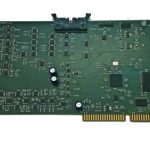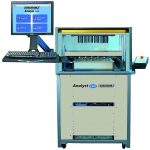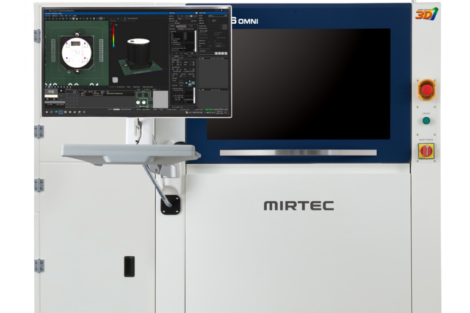The “Internet of Things” (IoT) – the network of physical objects embedded with electronics, communication, and sensors – is fast becoming today’s hot technology with more than one hundred IoT events, conferences, and seminars scheduled around the globe during 20151)
John VanNewKirk, President/CEO, CheckSum, LLC
Nowhere is IoT more advanced today than in the average automobile. Perhaps more accurately called the “Local Area Network of Things,” every modern vehicle already has between sixty and one hundred bus-interconnected sensors distributed throughout its chassis, drive train, and controls. According to the web site promoting the Automotive Sensors and Electronics Expo 2015, the number of sensors required by ever smarter automobiles will grow to more than 200 per vehicle by 20202). embedded “sensor modules” have a simple architecture: an in-system programmable device such as a microcontroller, A-to-D conversion and associated circuitry connecting it to the transducer doing the actual sensing. For products where miniaturization is not mandatory, sensor modules will be a small circuit board that includes a connector for power and communication with buses such as the CAN/LIN bus for automotive applications. USB, Ethernet, HDMI, as well as wireless will also be found routinely on sensor modules. Given their small physical dimensions, modules will be manufactured and tested as “multi-up” panels of anywhere from six to forty or more identical boards. After programming and test, the panel is broken apart and the individual modules are packaged as required.
Panels of sensor modules create substantial requirements for electrical test both in terms of the technology on the module itself and the logistic implications of high volume production, including:
- In-circuit test, which remains the most cost-effective means to identify assembly and component defects. Digital devices will likely feature boundary scan.
- Reduction of process complexity and inventory cost by programming in-system programmable devices “on-board” after they are attached physically to the module.
- Functional test will require bus interface and communication tests and application or simulation of the physical attribute the sensor module is designed to measure.
- Achieving faster throughput and therefore increased capacity by reducing time and process complexity at test and device programming.
The challenge is to translate these requirements into practical reality on the manufacturing floor.
For example, suppose increased production requirements require a 20% reduction in overall time per module from, say, 30 seconds to 24 seconds to perform in-circuit test, on-board device programming, and functional test. Functional test time is usually constrained by the nature of the test itself rather than tester limitations, so let’s assume functional test time cannot be reduced.
Checksum’s “in-circuit plus” test platform enables time savings for both on-board programming and in-circuit test. Its MultiWriter on-board programming system is uniquely capable of simultaneously programming every device on the panel – be it six, forty or more than three hundred – creating an enormous cycle time advantage over traditional one-chip-at-a-time in-system programmers.
The company’s recently introduced V12 high speed in-circuit stimulus/measurement DSP subsystem improves accuracy and therefore test coverage and diagnostic resolution while substantially reducing in-circuit test cycle time. In addition, the V12 possess substantial functional test stimulus/measurement capability and software “hooks,” reducing both complexity and cost of the total test and programming process. The MultiWriter and V12 technologies are the newest and most effective way to shave off the six seconds required by the example above.
Many manufacturers continue to use in-circuit test systems designed for an earlier era, whose last throughput improvement may have occurred more than a decade ago. Not only are these older systems less productive requiring fixtures typically twice the cost of those on modern systems, they were designed for neither multi-board panels nor on-board device programming. This lack of open platform flexibility increases test cost and inhibits adoption of both new technologies and the new test strategies that today’s manufacturing environment demands.
Minimizing board handling is the other straight forward way to improve throughput—especially in the high volume environments that typify IoT product production. Again, the solution is the “in-circuit plus” platform, which eliminates the handling time required to transport the multi-up panel from an in-circuit tester to a device programming station and finally, to a separate functional test station.
A key architectural feature of the Checksum open test platform is multi-stage bed-of-nails test fixturing. As the test process begins, the fixture nails contact every circuit node of each module for in-circuit test, which is always conducted first. Then, the dual-stage fixture rises a few millimeters so that only longer probes contact just those circuit nodes required for on-board programming and functional test. The Checksum test platform possesses the “smarts” to program devices and functionally test only on the modules in the panel that have already passed in-circuit test.
In confronting the growing proliferation and volume of modules required by the Internet of Things, the test engineer must rethink the entire test and device programming strategy. The Checksum open test platform, MultiWriter, V12 system module, and multi-stage fixturing ensure increased productivity in the ever more demanding requirements that the Internet of Things is creating on manufacturing floors worldwide.
Share:












